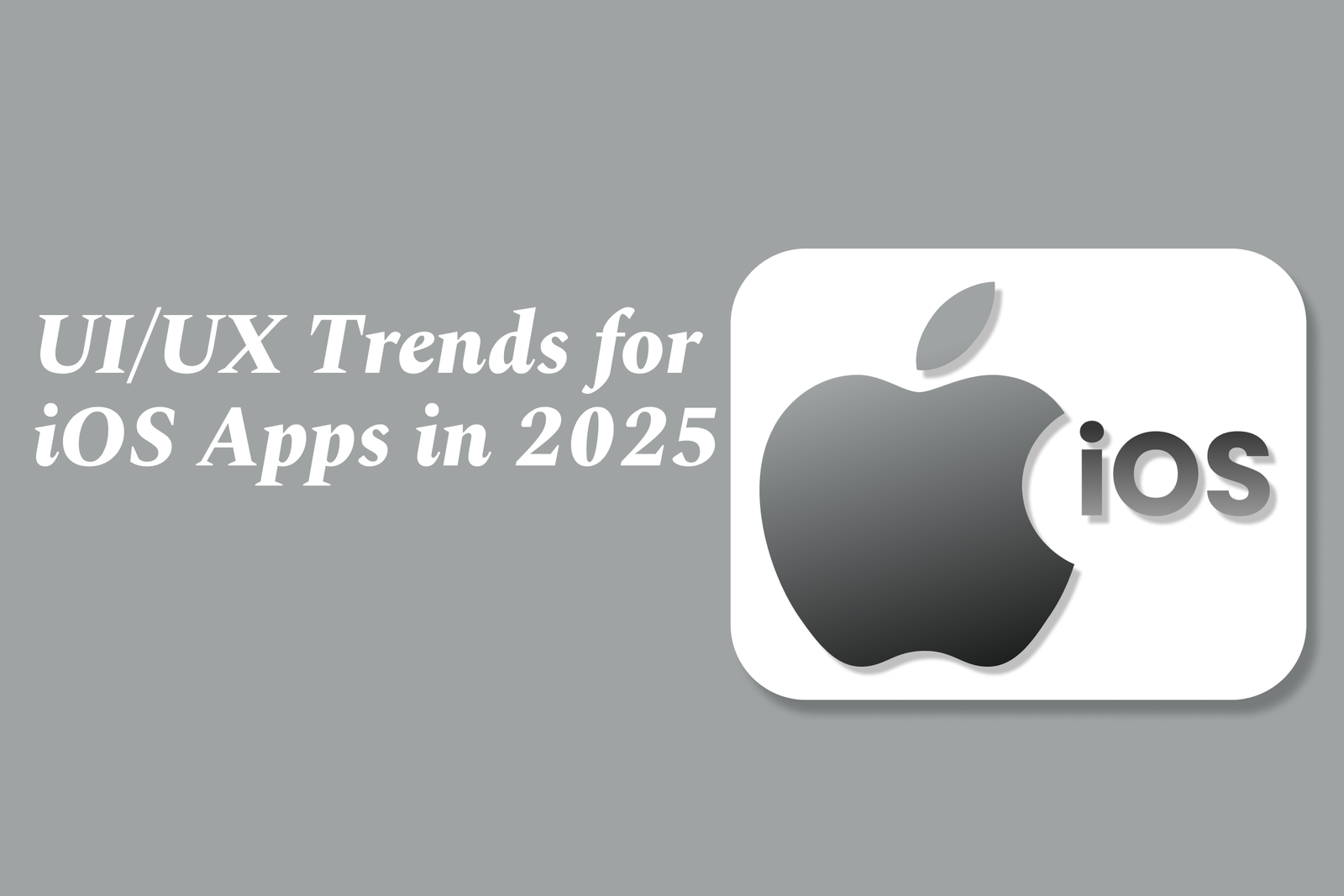UI/UX trends for iOS apps in 2025
UI/UX trends for iOS apps in 2025 focus on AI-driven personalization, immersive AR/VR experiences, dynamic visuals with bold colors and subtle depth, purposeful motion design, and enhanced accessibility—creating smarter, more intuitive, and highly adaptive user interfaces.
UI/UX Trends for iOS Apps in 2025
1 ) Shift Towards AI Integration in UI/UX Design
AI assistants are expected to reduce general mobile app usage by 25% by 2027, consolidating functions into fewer apps.
AI driven interfaces will dynamically generate designs tailored to user needs.
“Agentic” AI systems capable of independent multi step tasks will accelerate design and development workflows.
AI generated content like videos, 3D texts, and interactive elements will become mainstream assets.
2 ) Enhanced Immersive Experiences
AR and VR technologies continue evolving, with enterprise investment supporting e commerce, e learning, and interior design applications.
Innovations like Apple Vision Pro leverage spatial UI design featuring multi layering and glassmorphism to blend digital and physical worlds.
Interactive 3D elements and spatial design create more realistic, engaging app experiences.
3 ) New Visual Aesthetic Trends
Bold, dynamic color palettes combining electric cyan, deep purples, and pastels imbue a futuristic tech feel.
Minimalist but inviting UI components, such as solid, rounded buttons with soft shadows and high contrast, dominate.
Post neumorphism style introduces subtle depth, shadows, and layering that maintain accessibility.
Gradient color usage signals AI presence and enhances interface transparency and trust.
4 ) Purposeful Motion and Interaction Design
Motion design shifts focus from decorative animation to functional feedback.
Subtle transitions, micro interactions, and responsive gestures improve usability without overwhelming users.
Motion serves as an intuitive guide rather than mere aesthetics.
5 ) Accessibility and User Centered Design
Design thinking prioritizing real user needs guides design processes, moving from designer driven to user driven model.
Adaptive dark mode auto adjusting to environmental lighting is growing in adoption.
Silent authentication methods will reduce user friction by verifying identity passively.
6 ) Growing Influence of No Code and Website Builders
Tools like Webflow with AI integration are enabling faster, cheaper digital product development.
These platforms enhance flexibility, narrowing the gap with custom app development.
7 ) Enhanced Connectivity and Real Time Interaction
Satellite internet and 5G enable seamless real time updates and accessibility in remote areas.
Connectivity advancements support apps for logistics, agriculture, emergency services, promoting smarter solutions.
8 ) UI/UX Focus on Personalization and Empathy
Interfaces become more adaptive and empathetic to individual user preferences and context.
Text and emoji mixes, progressive blur, and dynamic layouts create richer experiences.
9 ) Evolution of Minimalism
Minimalism remains key but evolves by incorporating dynamic details such as micro animations, expressive typography, and immersive 3D content.
Design simplicity balances usability with engaging visuals.
10 ) Zero UI and AI Presence Integration
Emerging “zero UI” designs reduce reliance on traditional graphical elements, leveraging voice, AI assistants, and ambient computing.
Gradient styles and subtle UI cues denote AI involvement, creating transparent user interactions.
Summary:
The UI/UX landscape for iOS apps in 2025 is characterized by a fusion of AI driven personalization, immersive 3D and spatial experiences, and empathetic, user centric design approaches. Bold colors and subtle depth replace flat designs, while motion serves practical feedback roles. Accessibility, connectivity, and no code tools democratize development and improve real time responsiveness. Overall, design will be smarter, more adaptive, and seamlessly integrated into users’ lives.
https://justacademy.in/news-detail/android-notification-channel-changes
https://justacademy.in/news-detail/android-app-developer-conference-highlights
https://justacademy.in/news-detail/swiftui-adoption-surges-among-ios-developers
https://justacademy.in/news-detail/top-animation-packages-for-flutter
https://justacademy.in/news-detail/android-device-certification-updates
Related Posts
Java supports GDPR and data privacy by enabling secure data handling through encryption, controlled access, and precise data management. It allows developers to minimize PII exposure, ensure data confidentiality, and design workflows that comply with data protection regulations effectively.
Java code quality tools have evolved to include advanced static analysis, integrated security checks, and AI-powered code reviews. These updates help developers detect bugs, enforce coding standards, and enhance security, streamlining the development process and improving overall code reliability.
Java remains a cornerstone in big tech companies, evolving with modern features like records, pattern matching, and virtual threads. Its robust ecosystem, enhanced performance, and growing AI integrations keep it vital for both legacy systems and innovative new projects.
Java and CI/CD pipeline optimizations streamline Java application development by automating builds, tests, and deployments. They improve efficiency through parallelization, caching, and secure secrets management, enabling faster feedback loops and more reliable, scalable software delivery.
Java supports modern cryptography standards through its flexible Java Cryptography Architecture (JCA), enabling integration of advanced algorithms like AES, EdDSA, and post-quantum tools. Libraries like Bouncy Castle offer FIPS-certified, hardware-accelerated implementations for secure development.
Java 23 enhances record patterns by enabling concise, direct destructuring of record components within pattern matching, simplifying type checks and data extraction. This improvement boosts code readability and expressiveness by reducing boilerplate in handling immutable data classes.
Java remains a top choice for mobile app backends, powering scalable, secure, and high-performance server-side solutions. Latest trends include cloud-native microservices, reactive programming, and enhanced JVM optimizations, enabling efficient, flexible, and robust mobile backend development.
Java SE 24 and LTS Java SE 21 offer enhanced features and performance, while Apache Spark 4.0.0 introduces Scala 2.13 support and advanced ML and SQL capabilities. Together, they empower developers to build scalable, high-performance data applications with modern tools.
JUnit 5 modernizes Java testing with a modular architecture, improved assertions, and seamless Java 8+ support. Beyond JUnit, tools like Mockito and AssertJ enhance mocking and assertions, creating a powerful, flexible ecosystem for writing clean, efficient Java unit tests.
Java plays a pivotal role in cloud automation tools by providing a robust, platform-independent language used to build scalable automation frameworks like Jenkins and Selenium, enabling efficient CI/CD pipelines, testing, and orchestration across diverse cloud environments.










